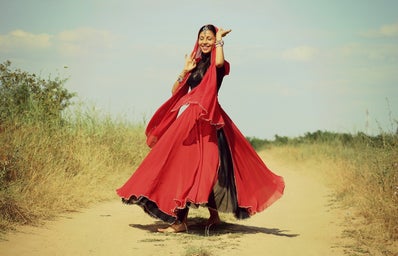Dolls are more than just toys for children. They are also expressions of culture, identity, and values. In this blog post, I want to talk about the similarities and differences between two iconic dolls from different parts of the world: Barbie and Kathputli.
Barbie is a popular doll created by Mattel in 1959. She is widely recognized as a symbol of Western beauty, fashion, and consumerism. She is known for her blonde hair, blue eyes, and slender figure. She has been marketed as a role model for girls, with various careers, hobbies, and outfits.
Kathputli is a traditional puppet form of Rajasthan, India. It is derived from the words ‘Kath’ meaning wood and ‘Putli’ meaning doll. The puppets are used to narrate folk tales, myths, and legends. Kathputli is regarded as a cultural heritage of Rajasthan, reflecting its history, values, and diversity.
Despite originating at horizontally opposite co-ordinates of the globe, Barbie and Kathputli share a bunch of common features:-
1. They are both forms of artistic expression that use dolls to tell stories.
Just like the way Barbie dolls have been a root cause of inculcating an interest in its audience towards fairy tales and dreamy stories, Kathputli dolls have also been a great facilitator in providing a reach to traditional folklores amongst the masses.
2. Both have evolved to adapt to changing social contexts and audience preferences.
Barbie has been given new looks and values over time showing the significance of women in different roles such as doctor, pop star, police officer, etc., and how the new Barbie feature film incorporates queer actors, Kathputli dolls have also touched various social and cultural changes via their story depiction and costumes.
3. They’ve both influenced other media, such as films, books, and video games.
Barbie-branded products included not only a range of dolls with their clothes and accessories but also a large range of branded goods such as books, apparel, cosmetics, video games, and audiovisual content. Likewise, Kathputli has been a vital part of plots of several books, handicraft items, illustrative videos & several movies.
4. Age, gender & culture-independent audience remains in awe of them and their stories.
People of all ages, genders, and cultures are fascinated by the stories of Barbie and Kathputli. The fact that people from different backgrounds enjoy these toys shows that they have a universal appeal. They are not limited to any particular age group, gender, or culture. Rather, they are enjoyed by people from all walks of life. This is because they represent something common to all of us- the desire to be entertained while learning something new.
5. They’re both used by the marketing giants in several industries including design, manufacturing & print for entertainment and cultural gigs.
Barbie is a popular toy that has been used in various marketing campaigns over the years. She has been used to promote everything from clothing to movies. Similarly, Kathputli has been used in various cultural events and shows. It is often used to promote Indian culture and heritage via exhibitions, hand-crafted illustrations, and a lot more.
. . .
There are also significant contrasts between Barbie and Kathputli. Barbie is a mass-produced commodity that is marketed globally, while Kathputli is a handmade craft that is performed locally. Barbie is a static object that requires the imagination of the user to animate it. Whereas, Kathputli is a dynamic puppet that requires the skill of the puppeteer to manipulate it. Barbie is a representation of an individual identity that can be customized by the user, while Kathputli is a representation of a collective identity that can be interpreted by the audience.
Who knows, in time we may have our very own Barbie-esque icon!
Here’s a visual representation of both art forms:


